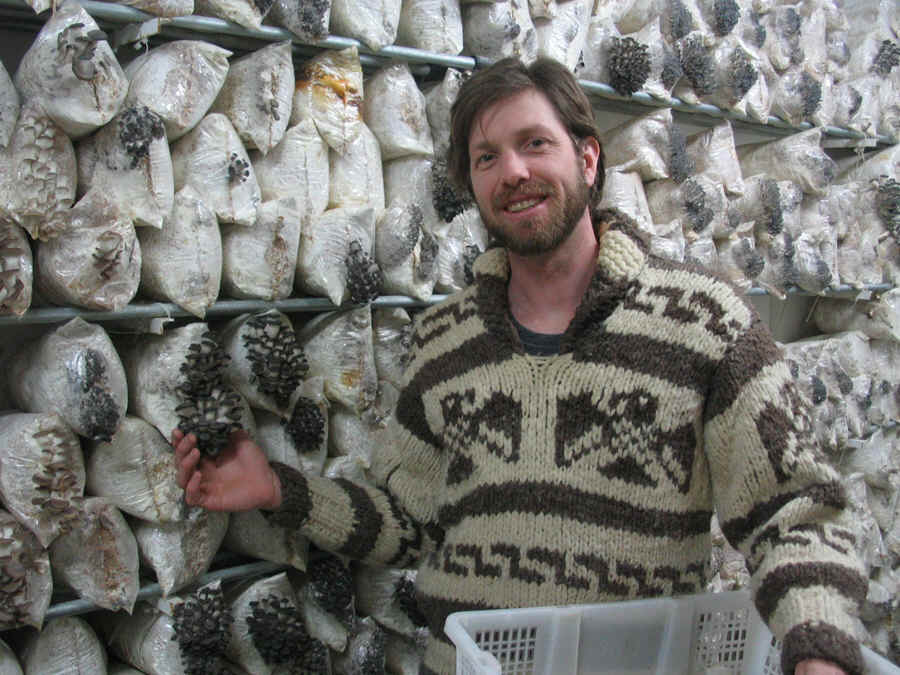




Cultivated mushrooms
All our mushrooms are grown in our installations. They are the result of a long process of learning and experimenting, which is finally starting to fall into place. Most of the species cultivated were collected from the wild, but some are also from culture banks from around the world. Collecting new species from nature is an ongoing experience not only for the cultivation aspect, but also simply for natural harvest. Expect to see a different variety in pring, summer, and fall as we partake in impressive harvests of wild mushrooms in north and south-western parts of QuébecIndex
Fresh mushrooms all year
Organic cultivation
Mushrooms for health
Information on our cultivated species
Oyster mushroom (pleurotus ostreatus)
King Oyster or Eryngii (pleurotus eryngii)
Winter mushrooms (Flammulina velutipes)
Organic cultivation
All of the cultivated mushrooms receive organic certification from Garantie- Bio/ECOCERT.
They are grown on a mixture of sawdust and organic wheat bran supplemented with natural
lye in a naturally controlled environment. No pesticides or chemical control of any kind
is used in any step of the culture. We rely on ancient techniques and knowledge imported
from Asia, where one finds the best and most ancient cultivation methods in the world. (Top of page)
Mushrooms for health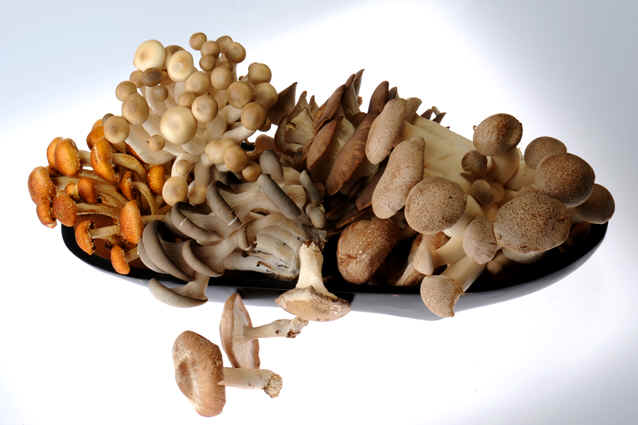
Contrary to common belief, whether wild or cultivated, mushrooms are quite nutritious and
possess many medicinal properties. In Asia where food and medicine are one, many mushrooms
are a staple food and not an exotic or luxury food as we have come to know any mushroom,
that is not of the button mushroom (champignon de Paris) family.
Not only do mushrooms contain good quantities of minerals and vitamins, they are also known to achieve great health benefits in regulation of blood cholesterol, immune system boost and anti-tumor, anti-cancer properties.
Mushrooms can play an important role in a vegetarian or vegan diet, as they are also a good source of protein. In fact most mushrooms contain on average anywhere between 15 % to 30 % protein of their dry mass. This compares to as much as 50 % of the protein content in eggs and 33% of most meats! (Top of page)
Information on our cultivated species
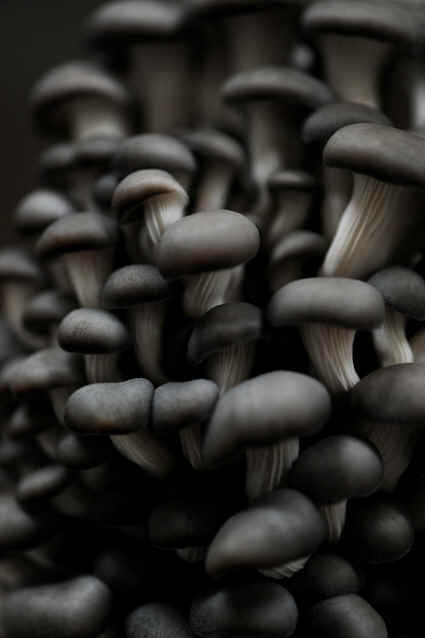 The Oyster mushroom (pleurotus
ostreatus):
The Oyster mushroom (pleurotus
ostreatus):
A large family comprising a myriad of strains and subspecies, most of which are native to
North America, sharing common characteristics of taste, texture and nutritional value.
This mushroom is enjoyed in as many ways as you can imagine. Raw in salads, sautéed,
fried, poached, grilled, etc. Use it anywhere you would use white button mushrooms and
enjoy its meaty texture and delicate taste!
The oyster mushroom is high in protein (15-27 % per dry mass), contains 85-100 mg of vitamin C per 100 g and is a good source of niacin, folic acid and potassium. Clinical studies have shown that the oyster mushroom naturally produces Lovastatin, a drug commonly used in the treatment of high blood cholesterol. It has also demonstrated strong anti-tumoral [Ying(1987)]activity specifically for the intestinal tract[Zusman et al.(1997)]. (Top of page)
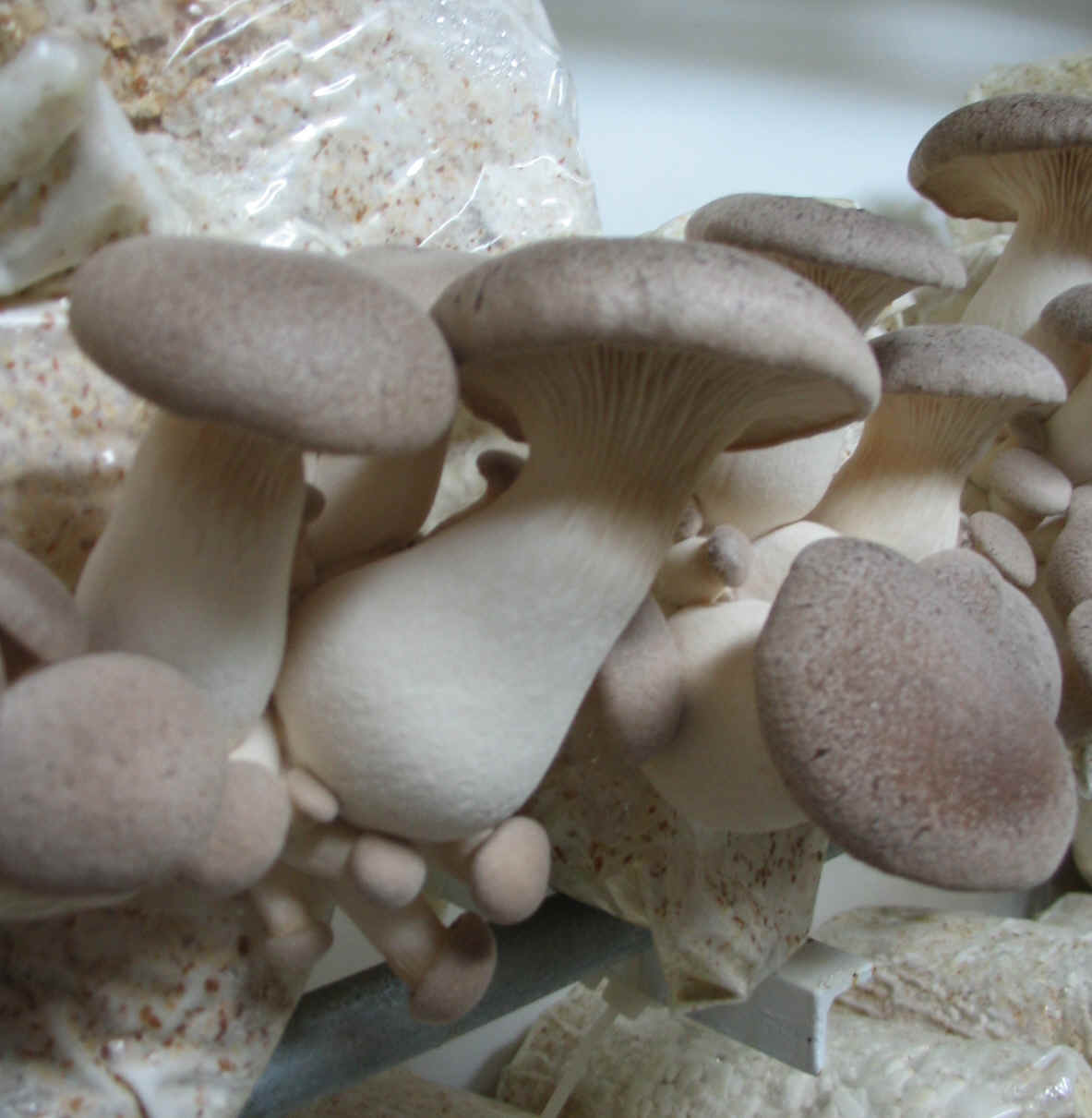
This is a species found on the European and Asian continents, genetically related to other
oysters, but different in taste. It is probably one of the highest quality mushrooms for
its superior taste and ability to keep without spoiling for weeks! This mushroom is at its
best, whole or halved, grilled or broiled after having been basted with an oil-based
dressing, but does great in any dish. Don’t be fooled by its size; once thinly sliced
it will yield an impressive quantity of food!
It shares
similar nutritional and medicinal properties with other members of the oyster family. (Top of page)
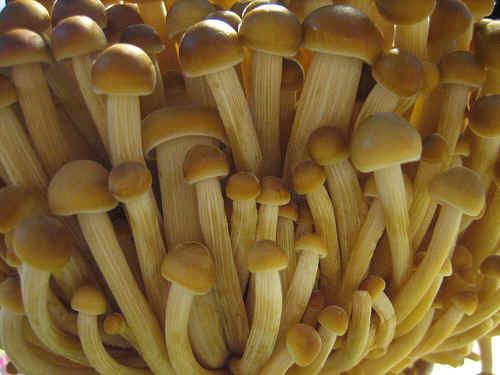 The Winter Mushroom
(Flammulina velutipes):
The Winter Mushroom
(Flammulina velutipes):
Also known as the velvet foot, this is the same species as the famed Asian enoki (enokitake) only cultivated in a more natural way. This strain was collected from the wild in northern Québec. It gets its name from the fact that it is often the last mushroom you will encounter in late fall and the first to appear in the spring. It can withstand several frosts and a thaw will simply bring it back to life! Once again there is no limit to the uses of the winter mushroom; though delicate, it is at its best raw or only very slightly cooked. Use in salads, sandwiches, as a last minute addition to miso soups or consommés. Simply trim the very end of the stem and eat the rest. The fused base of the stems can be used to flavour soups or sauces.
As with other mushrooms, the protein content is appreciable ranging from 17 to 30 % of its dry weight. It is also a good source of potassium and trace elements.
It contains a water-soluble polysaccharide known as flammulin (FVP) which has demonstrated potent anti-cancer and anti-tumor activity [Zing et al.(1990)] and [Qingtian et al.(1991)]. (Top of page)
Business
informations | Cultivated mushrooms | Wild mushrooms | Recipes
| Where to find our products | Home
Page
Page en français
